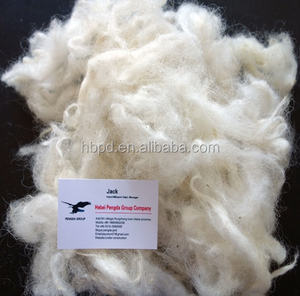The Comfort of What Is Cashmere: How It Enhances Your Wardrobe
The Comfort of What Is Cashmere: How It Enhances Your Wardrobe
Blog Article
Understanding the Various Sorts Of Cashmere a Natural Fiber and Their Special Benefits
The Origins of Cashmere: A Historical Overview
While the lavish touch of cashmere remains to appeal modern-day consumers, its origins map back to the rough, chilly environments of Mongolia and the Himalayas. For centuries, the native individuals of these areas have actually been raising Capra Hircus goats, the prime resource of cashmere wool. These goats, resilient versus the serious winters, grew a great undercoat to make it through, which later on became referred to as cashmere. The name itself admires Kashmir, an area in India where the wool was at first refined. Much of the early cashmere profession course was assisted in by the Silk Road, linking Asia with the Center East and Europe. Regardless of its global spread, the finest cashmere is still believed to originate from the initial areas of Mongolia and the Mountain Ranges.

The Manufacturing Process: From Goat to Garment
Shearing a Capra Hircus goat notes the beginning of the elaborate cashmere manufacturing process. This fragile treatment typically happens annually during spring. The penalty, soft undercoat is then separated from the coarser external hair, a process understood as dehairing. The resultant raw cashmere is after that cleaned to get rid of contaminations such as dirt, oil, and vegetable issue.
The clean fiber goes through coloring, spinning, and weaving, or knitting, to change it right into a fabric. Facility procedures like top quality control checks and finishing procedures adhere to, making sure the end item maintains the luxurious requirement anticipated of cashmere. This painstaking procedure, from goat to garment, validates the high cost attached to cashmere products, making them a sign of deluxe and refinement.
The Various Kinds of Cashmere: A Thorough Evaluation

The Distinct Benefits of Cashmere: Convenience and Sustainability
Moving from the variety of cashmere types to the advantages they offer, comfort and sustainability stand apart plainly. Cashmere, an all-natural fiber, is renowned for its exceptional soft qualities, providing a level of comfort that synthetic fibers can't match. The material's lightness, yet outstanding warmth retention, makes it optimal for all seasons. Moreover, cashmere's all-natural flexibility permits it to go back to its original shape, making it resistant to shrinking or stretching.
When it involves sustainability, cashmere is eco-friendly and eco-friendly, as it's gathered from cashmere goats that regrow their layers each year. what is cashmere. Unlike artificial fibers which can take centuries to decay, cashmere's impact on the environment is minimal. This mix of convenience and sustainability makes cashmere a useful choice for aware customers

Caring for Your Cashmere: Maintenance and Conservation Tips
While cashmere is definitely a lavish and lasting choice, it needs details care to keep its quality and expand its lifespan. To start, cashmere need to be hand washed using chilly water and a mild detergent. Cashmere products should be saved in a dry and awesome location, away from direct sunlight and wetness.
Purchasing Cashmere: Understanding Its Value and Worth
Although cashmere might originally seem like a costly investment, its long-term worth and worth ended up being noticeable when you consider its Look At This impressive qualities. Recognized for its unequaled gentleness and warmth, cashmere is a costs natural fiber that exceeds various other materials. Investing in cashmere, consequently, is not just about present fashion trends, but concerning welcoming a lasting, long-lasting, and luxurious way of life.
Final Thought
In summary, the type of cashmere one chooses, be it Mongolian, Chinese, or go now Italian, is determined by individual choices for heat, luxury, sustainability, and spending plan. Recognizing the beginnings, manufacturing process, and one-of-a-kind benefits of different kinds of cashmere can direct customers in their investment in this extravagant all-natural fiber.
Whether it's the extraordinary warmth of Mongolian cashmere, the price of Chinese cashmere, or the eco-conscious manufacturing of Italian cashmere, there's a tale to be discovered behind each fiber type. Cashmere, a natural fiber, is renowned for its unmatched soft qualities, supplying a level of comfort that synthetic fibers can not match.When it comes to sustainability, cashmere is naturally degradable and sustainable, as it's harvested from cashmere goats who regrow their layers every year. Known for its unparalleled soft qualities and heat, cashmere is a costs all-natural fiber that outshines other materials. Recognizing the origins, production procedure, and distinct advantages of different kinds of cashmere can guide consumers in their financial investment in this extravagant natural fiber.
Report this page